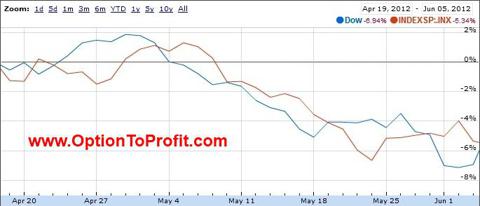 People tend to have very strong feelings about entitlements.
People tend to have very strong feelings about entitlements.
Prior to this week there were so many people waiting for the so-called “Santa Claus Rally” that you would have thought that it was considered to be an entitlement.
After the week we’ve just had you can probably add it to the other market axioms that haven’t really worked out this year. If anything, so far it appears that you should have taken your vacation right now along with Santa Claus, who must have not realized that his vacation conflicted with the scheduled rally. You also should probably not taken the wizened advice to vacation months ago when the traditional prevailing attitude implored you to “sell in May and go away.”
The past week saw the S&P 500 drop 1.7% to a closing level not seen in a 22 trading sessions. This week’s drop places us a full 1.8% below the recent record high. Yet, like during a number of other smallish declines in 2013, this one is also being warily eyed as being the precursor to the long overdue, but healthy, 10% decline. We have simply become so accustomed to advances that even what would ordinarily be viewed as downward blips are hard to accept.
For those that have a hard time dealing with conflict, these are not good times, as the Santa Claus Rally is being threatened by the specter of a correction in the waiting. While there’s still time for the traditional rally it’s hard to know whether Santa Claus factored the thought of an outgoing Federal Reserve Chairman presiding over his final FOMC meeting and holding his final press conference.
Oh, and then there’s also the little matter of possibly announcing the beginning of the taper to Quantitative Easing. Just a week earlier the idea that such an announcement would come in December was considered highly unlikely. Now it seems like a real possibility and not the kind that the markets were altogether comfortable with, even as they expressed comfort with the previous week’s Employment Situation Report.
While I admire Ben Bernanke and believe that he helped to rescue the world’s financial markets, it may not be far fetched to cast him as the “Grinch” who stole the Santa Claus Rally if the markets are taken off guard. Personally, I don’t believe that he will make the decision to begin the tapering, in deference to Janet Yellen, his expected successor, privilege to decide on timing, magnitude and speed.
However, I’m not really willing to commit very much to that belief and will likely exercise the same caution as I did last week.
As usual, the week’s potential stock selections are classified as being in Traditional, Double Dip Dividend, Momentum and “PEE” categories this week (see details).
Last week was one of my slowest trading weeks in a long time. Even with cash to spend there never seemed to be a signal that price stability would temper downward risk. Moving forward to this week comes the challenge of trying to distinguish between value and value trap, as many of the stocks that I regularly follow are at more appealing prices but may be at at continued risk.
With lots of positions set to expire this week, the greatest likelihood is that whatever new positions I do establish this week will be with the concomitant use of expanded weekly options or even the January 18, 2014 option, rather than options expiring this coming Friday. The options market is certainly expecting some additional fireworks this coming week as option premiums are generally considerably higher than in recent months.
Microsoft (MSFT) is one of those stocks that has come down in the past week, but like so many still has some downside potential. Of its own weight it can easily go down another 3%, but under the burden of a market in correction its next support level is approximately 8% lower. Since the market’s recent high just a few weeks ago, Microsoft has slightly under-performed the market, but it does trade with a low beta, perhaps offering some relative down side protection. As with many other stocks this week its option premium is far more generous than in the recent past making it perhaps more difficult to resist, but with that reward comes the risk.
There’s probably not much reason or value in re-telling the story of Blackberry (BBRY). Most already have an idea of how the story is going to end, but that doesn’t quiet those who dream of a better future. For some, the future is defined by a weekly option contract and Blackberry reports earnings this week. The options market is implying about a 12% move and for the really adventurous the sale of a put with a strike level almost 17% below Friday’s close could yield a weekly ROI of 1.4%. On a note that shouldn’t be construed as being positive, as the market itself appears a bit more tenuous, Blackberry’s own beta has taken a large drop in the past 3 months. The risk, still remains, however.
Although I discussed the possibility of purchasing shares of Joy Global (JOY) in last week’s article after they reported earnings, I didn’t do so, as it fell hostage to my inactivity even after a relatively large price drop. Despite a recovery from the low point of the week, Joy Global, which has been very much a range bound trading stock of late is still in the range that has worked well for covered call sales. The same is a little less so for Caterpillar (CAT) which is approaching the upper end of its range as it has worked its way toward the $87.50 level. However, with even a mild retreat I would consider once again adding shares buoyed a little bit with the knowledge that shares do also go ex-dividend near the end of the January 2014 option cycle.
Citibank (C) was another that I considered purchasing last week and following a small price drop it continues to have some appeal, also having slightly under-performed the S&P 500 in the past three weeks. However, despite its beta having fallen considerably, it is still potentially a stock that could respond far more so than the overall market. Its option premium for an at the money weekly strike is approximately 18% higher than last week, suggesting that the week may be somewhat more risky than of late.
While my shares of Halliburton (HAL) haven’t fared well in the past week, I am looking at reuniting my “evil troika” by considering purchases of both British Petroleum (BP) and Transocean (RIG), which are now also down from their recent highs. Following in a week in which Anadarko (APC) plunged after a bankruptcy court ruling from a nearly decade old case, the “evil troika” is proof that there is life after litigation and after jury awards, fines and clean up costs. While oil and oil services have been volatile of late, both British Petroleum and Transocean share with Microsoft the fact that they have already under-performed the S&P 500 during this latest downturn but have low betas, hopefully offering some relative downside protection in a faltering market. Perhaps even better is that they are beyond the point of significant downward movement emanating from judicial decisions.
Coach (COH) hasn’t been able to garner much respect lately, although there has been some insider buying when others have been disparaging the company. Meanwhile it has been trading in a fairly well defined range of late. It is a stock that I’ve owned eight times during 2013 and regret not having owned more frequently, particularly since it began offering weekly and then expanded options. Like a number of stocks that I’m considering this week, it too is still closer to the upper end of the range than I would normally initiate new positions and wouldn’t mind seeing a little more weakness.
Seagate Technology (STX) may have a higher beta than is warranted to consider at a time that the market may be labile, however it has recently traded well at the $47.50 level and offers an attractive reward for those willing to accept the frequent movements its shares make, even on an intraday basis. My expectation is that If I do consider a trade it would either be the sale of puts before Wednesday’s big events or otherwise waiting for the aftermath and looking at expanded option dates.
Finally, and yet again, it seems as if it may be time to consider a purchase of eBay (EBAY). While I’ll never really lose count of how many times I own a specific stock, going in and out of positions as they are assigned, eBay is just becoming the perfect example of a stock trading within a range. For anyone selling options on eBay, perhaps the best news was its recent downgrade that chided it for trading in a range and further expecting that it would continue range bound. Although you can’t necessarily trade on the basis of the absolute value of price movements of a stock, the next best way to do so is through buying shares and selling covered calls and then repeating the process as often as possible.
Traditional Stocks: British Petroleum, Caterpillar, eBay, Microsoft, Transocean
Momentum Stocks: Citibank, Coach, Joy Global, Seagate Technology
Double Dip Dividend: none
Premiums Enhanced by Earnings: Blackberry (12/20 AM)
Remember, these are just guidelines for the coming week. The above selections may become actionable, most often coupling a share purchase with call option sales or the sale of covered put contracts, in adjustment to and consideration of market movements. The overriding objective is to create a healthy income stream for the week with reduction of trading risk.



 It only seems fitting that one of the final big stories of the week that saw the Dow Jones eclipse its nearly 6 year old record high would be the latest reports of how individual banks performed on the
It only seems fitting that one of the final big stories of the week that saw the Dow Jones eclipse its nearly 6 year old record high would be the latest reports of how individual banks performed on the 

